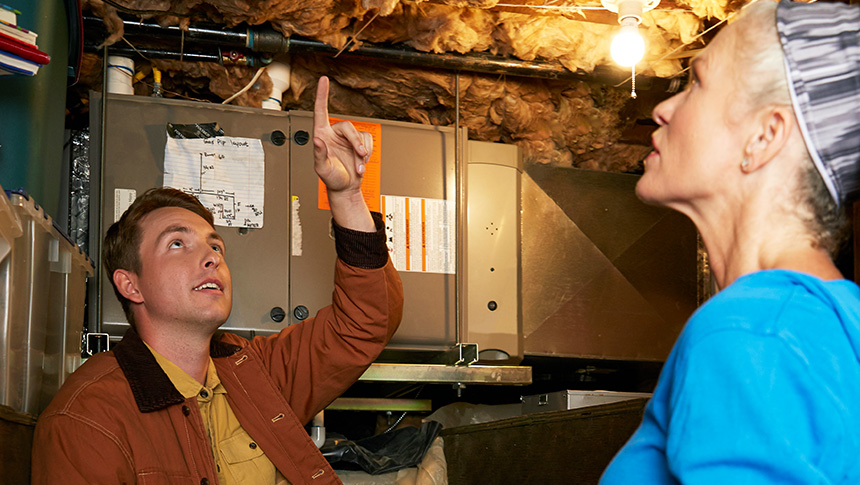Simple basement improvements to help you save energy
No-cost and Low-cost Updated: May 10, 2024A DIY guide to finding energy-saving opportunities in your basement

A DIY guide to finding energy-saving opportunities in your basement

Basements can vary greatly from home to home. However, one thing all basements have in common is how they can affect your home’s energy consumption. According to the Department of Energy, an inefficient basement can be responsible for up to one quarter of your home’s annual energy use.
Whether your basement is unfinished or acts as an additional living space, the following guide will help you identify energy-saving opportunities in your basement that can help your entire home save energy.
When warm air in your home rises, it creates negative air pressure in the lowest part of your home, typically in the basement. The negative pressure pulls air from outside into your basement through holes and openings along the outside perimeter walls. Examine your basement floor all the way up to the ceiling to look for gaps, cracks and holes. Common areas with air leaks include:

Lighting in the basement is often incandescent or earlier-generation fluorescent. Consider upgrading older incandescent light bulbs to energy-efficient LED lighting. LEDs offer a wide variety of color options and can last 25 times longer than traditional incandescent lighting.
All homes have some levels of a naturally occurring gas called radon, however, elevated levels can increase your risk of lung cancer. High radon levels can be found in both new homes and old, especially in basements. Fortunately, there are ways of testing and improving radon levels in your home. Tests can be found at your local hardware store, or you can call 1-800-767-7236 to order one from the United States Environmental Protection Agency.
Follow the testing instructions on the packaging. If radon levels are above 4 picocuries per liter (pCi/L), consider contacting a professional to have a radon mitigation system installed. This might include sealing cracks where radon gas is entering the home or installing a fan and a series of pipes under the home that redirect the air away from the inside of your home.
If you have visible heating and cooling ducts in your basement, check to see if there are any leaks. You may want to install duct insulation and seal any leaks along the duct work.
You can typically find a wide variety of appliances in basements such as washers and dryers, water heaters, furnaces, extra refrigerators and chest freezers. Consider taking inventory of the approximate age and condition of each appliance. When upgrading from older equipment, you may find that incentives, tax credits and energy savings can greatly offset the cost of newer, high-efficiency equipment.
If you are looking for help making your basement more energy efficient, need assistance completing any of the above projects or would like some general guidance, consider hiring a contractor. This may be the best step to address any health and safety issues like:
You can find contractors enrolled in the Energy Trust residential program through the Find a Contractor tool.